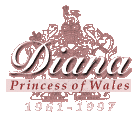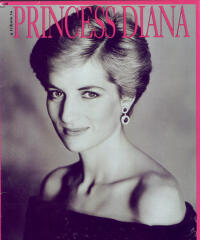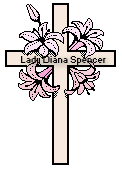

 |
| Windsor (royal family), name of the royal
family of Great Britain, adopted in 1917 by proclamation of the British
king George V. The change was made to show the antipathy of his British
subjects toward Germany during World War I. The name was taken from Windsor
Castle. Reigning members of the house of Windsor have been George V, Edward
VIII, George VI, and Elizabeth II.
Before adoption of the Windsor name, the dynastic
designation of the British royal family had been German, derived from the
marriage of the British queen Victoria to a cousin, Albert of Saxe-Coburg-Gotha.
Under the terms of the 1917 proclamation, descendants of Victoria in the
male line who were also British subjects were to bear the surname Windsor.
In 1952 these terms were applied by decree to the male issue of Queen Elizabeth
II. In 1960, however, the preceding decree was modified. Only Elizabeth's
own children, titled princes and princesses, as well as the issue of her
sons, would bear the name Windsor, while others of her descendants would
be named Mountbatten-Windsor, taking the surname of her husband, Prince
Philip.
"Windsor (royal family)," Microsoft(R) Encarta(R) 97 Encyclopedia. (c) 1993-1996 Microsoft Corporation. All rights reserved. |
 |
|
Diana Frances Spencer was born July 1, 1961 at Park House, the home her parents rented on the the English royal family's estate at Sandringham. As a child she occasionally played with Prince Andrew and Prince Edward, who were near her in age. Diana had two older sisters, Sarah and Jane, and a younger brother, Charles. When Diana was six, her mother left her father. The Spencers divorced in 1969, and Diana's father received custody of the children. In 1975 Diana's father became the eighth Earl Spencer, making Diana a Lady. Diana and her siblings moved to Althorp, the Spencer family estate in Northampton. Diana attended private boarding schools. Although she wasn't an especially good student, she was excelled at sports, and won trophies for her swimming. She dreamed of being a ballerina, but grew too tall (as an adult she was 5'10"). After leaving school in 1978 she worked as a nanny and a waitress before becoming a teacher at the Young England kindergarten in Pimlico, London. Her romance with the Prince of Wales began in 1980. He was twelve years older than Diana, and had previously dated her sister Sarah. Almost from the start, the press took a special interest in "Lady Di." They staked out her apartment and followed her everwhere. Diana later said that she found the constant attention unbearable. Diana and Charles were married July 29, 1981 at St Paul's Cathedral. The wedding was broadcast in 74 countries and watched by 750 million people worldwide. Diana was the first English woman to marry an heir to England's throne in over 300 years. At the ceremony the Archbishop of Canterbury said,"Here is the stuff of which fairy tales are made." But the fairy tale was an illusion, as Diana had already discovered. Prince Charles was still in love with an old girlfriend, Camilla Parker-Bowles. "There were three of us in this marriage, so it was a bit crowded," Princess Diana remarked years later. Distraught, Diana developed bulimia and attempted suicide. Despite her problems, she was a devoted mother to her two sons, Prince William and Prince Harry. She worked tirelessly for charity, and was beloved by the public for her warmth and humanity. In 1992 Princess Diana decided to expose the truth about her relationship with Prince Charles to the public. She secretly collaborated with author Andrew Morton on his book Diana, Her True Story. The princess's direct involvement in the writing of the book was not revealed to the public until after her death. The separation of the Prince and Princess of Wales was announced on December 9, 1992. The divorce became official August 28, 1996. Princess Diana kept the title Princess of Wales and continued to work for her favorite charities. She and Prince Charles had joint custody of their sons. In 1997 Princess Diana fell in love with Emad "Dodi" Fayed, the son of billionaire businessman Mohamed Al-Fayed. Their romance ended abruptly on August 31, 1997 when both were killed in a car accident in Paris while fleeing from paparazzi. Princess Diana's sudden death led to an unprecedented worldwide outpouring of grief and love. As her brother said at her funeral, she was "the unique, the complex, the extraordinary and irreplacable Diana, whose beauty, both internal and external, will never be extinguished from our minds." |
|
William
Arthur Philip Louis Windsor,
Godparents: HRH Willliam Arthur Philip Louis Windsor,
HRH Felipe Juan Pablos de Bourbon,
HRH Frederick de Laborde de Monpezat,
HRH Victoria Ingrid Alice Bernadette
Desiree,
HRH Nikolaos Oldenburg, Prince Of Greece;
HRH Dimitrye Ivan Mihailo, Prince Of
Yugoslavia;
HRH Alexandra Miller von Furstenburg,
Henry Charles Albert David Windsor,
Diana’s Family Tree Parents: Father: Edward John Spencer, (Viscount
Althorp) 8th Earl Spencer, born 24 July 1924, only son and second child
of Albert Edward John, 7th Earl Spencer ( 1892-1975 ) by his wife Lady
Cynthia Elinor Beatrix Hamilton Spencer
Mother: The Honorable Frances Ruth Burke
Roche Spencer Shand Kydd, younger daughter and second child of Edmund Maurice
Roche ( 1885-1955 )
Siblings: Sisters: 1). Elizabeth Sarah Louise Spencer McCorquodale,
Born: 19 March 1955 at Barrat Maternity
Home,
2). Cynthia Jane Spencer Fellowes,
Born: 11 February 1957 at Queen Elizabeth
Maternity Home, King’s Lynn, Norfolk,
Brothers: 1). John, born and died 12 January 1960 2). Charles Edward Maurice Spencer,
Born: 20 May 1964 at the London Clinic,
Child: Lady Katherine "Kitty" Eleanor
Spencer
Charles’ Family Tree Parents HM Elizabeth Alexandra Mary, Queen Of
The United Kingdom of Great Britain and
Father: HRH Philip Mountbatten - Windsor,
Born: 10 June 1921
Marriage: 20 November 1947
Siblings Sister: HRH Anne Elizabeth Alice Louise,
Children Of Marriage 1: The Honorable Peter Mark Andrew Philips
The Honorable Zara Anne Elizabeth Philips
Marriage 2: 12 December 1992 Commander
Timothy James Hamilton Laurence;
Brothers: 1.) HRH Andrew Albert Christian Edward,
Children Of Marriage 1: HRH Beatrice Elizabeth Mary, Princess
Of York
HRH Eugenie Victoria Helena, Princess
Of York;
2. ) HRH Edward Anthony Richard Louis,
Engagement 1: 6 January 1999 to
Other Family Members
Princess Margaret Rose Windsor Armstrong
- Jones,
Born: 21 August 1930
Spouse Anthony Charles Robert Armstrong - Jones,
Born: 7 March 1930
Children: David Albert Charles Armstrong - Jones,
Born: 3 November 1961
Sarah Francis Elizabeth Armstrong - Jones Chatto, Lady Snowdon, St George Sprouless Born: 1 May 1964
|
| The
Baronage
Royal & Noble Heritage of Europe Windsor Street -The British Royals |
 |
|
Full Name: (HRH) Lady Diana Frances Spencer Windsor, Princess Of Wales Titles: Duchess Of Cornwall, Duchess Of Rothesay,
Countess Of Chester, Countess Of Carrick
Birth: 1 July 1961 Christened: 30 August 1961 at St. Mary Magdalene Church, Sandringham Godparents: Lady Mary Coleman, John Floyd, Carol Fox, Alexander Gilmour, and Sarah Pratt Ascent To Lady Spencer: 9 June 1975 Engagement: 24 February 1981 to HRH Charles
Philip Arthur George Windsor, Prince Of Wales,
Married: 29 July 1981 First Child Born: 21 June 1982 HRH William Arthur Phillip Louis Windsor, Prince Of Wales Second Child Born: 15 September 1984 HRH Henry Charles Albert David Windsor, Prince Of Wales Separated: 9 December 1992 Withdrawal From Public Life: 3 December 1993 Spouse Admits Adultery: 29 June 1994 Panorama Interview: 20 Novemeber 1995 She admits adultery Queen Asks Couple To Seek Divorce: 20 December 1995 Divorce Agreement Reached: 28 February 1996 Divorce Settlement Reached: 16 July 1996 Divorce: 28 August 1996, London, Great Britain Engagement: 31 August 1997 to Dodi Al-Fayed, Producer; Son of Mohammed Al-Fayed owner, president, and manager of Harrod’s department store, London, Great Britain Death: 31 August 1997, Paris, France Funeral: 6 September 1997,
Interred: 6 September 1997; Althorp, Northampshire, Great Britain |
|
A Princess with global appeal
***** "I want them to have an understanding of people's emotions, of people's insecurities, of people's distress, of their hopes and dreams." ~ Diana on the princes
***** "I've never felt so alone." ~
Diana
***** "Your kindness and affection have carried me
***** ON CHILDHOOD--"I always felt very detached from everyone else. I knew I was going somewhere different." ON OFFICIAL ENGAGEMENTS--"With Charles at my side, I can't go wrong." ON MARRIAGE--"I desperately loved my husband and I wanted to share everything together and I thought we were a very good team...Charles and I had our duty to perform and that was paramount." ON BULIMIA--"I didn't like myself. I was ashamed because I couldn't cope with the pressures...I felt compelled to perform." ON CHILDREN--"I want to bring them up with security, not to anticipate anything because they will be disappointed...I hug my children to death." ON BEING A FASHION ICON--"Everyone said I was the Marilyn Monroe of the 1980's and I was adoring every minute of it. Actually, I've never sat down and said "Hooray how wonderful." Never. The day I do we're in trouble." ON CHARITY WORK--"There are more important things in life than ballet, there are people dying in the streets." "I will run to anyone who calls to me in distress, wherever it is...Nobody can dictate my conduct. I work on instinct. It's my best advisor." ON THE MEDIA--"I seemed to be on the front page of a newspaper every day, which is an isolating experience, and the higher the media put you...the bigger the drop." ON SEPARATION FROM CHARLES--"I was the separate wife of the Prince of Wales, I was a problem, fullstop. I'll fight to the end because I believe I have a role to fulfil and I've got two children to bring up." ON SINGLE LIFE--"People think that at the end of a day, a man is the only answer. Actually, a fulfilling job is better for me...I've got wonderful friends, I've got my boys, I've got my work." ON AMBITIONS FOR THE FUTURE--"I don't sit here with resentment. I sit here with sadness because a marriage hasn't worked. I sit here with hope because there is a future ahead, a future for my husband, a future for myself, a future for the monarchy."
|
|
This was all taken from the special tribute
issue of MacLean's magazine. It's as accurate as you're gonna get, I guarantee
that. I know some stuff was probably left out but that's not my fault.
Enjoy it.
JULY 1, 1961--Diana Frances Spencer is born to Frances and Edward John (Johnnie) Spencer. Her father would later become the 8th Earl Spencer. SUMMER 1967--Diana's parents separate amid a minor scandal after 14 years of marriage. Involved in an affair with Peter Shand-Kydd, married heir to a wallpaper fortune, Diana's mother moves out of the family home. Sarah, 12 and Jane, 10, are sent to boarding school. Diana and her younger brother Charles are shuttled back and forth between home and their mother's place in London. The Spencers enter into an acrimonious divorce and custody battle. DECEMBER, 1967--Their father wins custody of Diana and Charles. Diana is enrolled in Silfield day school. MAY 2, 1969--Frances Spencer marries Shand-Kydd, whom the children like. SEPTEMBER, 1970--Diana is sent to her first
boarding school,
JULY 1977--Diana finishes her schooling at West Heath secondary school in Kent. JULY 14, 1977--Earl Spencer marries the bouffant-haired Raine, Countess of Dartmouth, daughter of romance novellist Barbara Cartland. Her relations with the Spencer children are strained. They dub her "Acid Raine". NOVEMBER 1977--Prince Charles, who dated Sarah Spencer for several months, notices Diana at a shooting party at Althorpe, the Spencer estate in Northamptonshire, referring to her later as a "very jolly and amusing and attractive 16 year old--full of fun." JULY 1980--The love affair with Prince Charles begins during a polo playing weekend when they both stay at the home of mutual friends Cmdr. Robert and Philippa de Pass. Sharing a London flat with three other girls, Diana was working as an assistant at Young England kindergarten and as an unpaid nanny to an American couple's baby son. FEBRUARY 24, 1981--The engagement is announced. A reporter asks if they are in love--Diana: "Of course". Charles: "Whatever 'in love' means". JULY 29, 1981--The fairy-tale wedding in St.
Paul's Cathedral. Some
JUNE 21, 1982--Diana gives birth after 17 hours of labor to Prince William Arthur Philip Louis Windsor, known as Wills, who is second in line to the throne after his father. MARCH 1983--Charles and Diana being a 6 week visit to Australia and New Zealand. JUNE 14-July 1, 1983--Charles and Diana make their first visit to Canada, an 18-day trip to the Atlantic region, Ottawa and Edmonton. SEPTEMBER 15, 1984--Birth of "the spare", Prince
Henry Charles Albert David, known as Harry.
APRIL 30-May 7, 1986--Diana and Charles visit British Columbia for the opening of Expo 86 in Vancouver. JUNE 3, 1991--Prince William is accidentally
struck by a golf club at
JULY 1991--Diana hugs a sobbing AIDS patient at an English hospital, in one of her many displays of fearlessness and warmth that helped dispel panic about being near AIDS sufferers. OCTOBER 23-29, 1991--Charles and Diana, accompained by their sons, visit Ontario on their 3rd and final trip to Canada together. MARCH 29, 1992--Diana's father dies of a heart
attack in a London
JUNE 1992--Andrew Morton's biography, Diana,
Her True Story written
AUGUST 1992--The press reports a telephone conversation between Diana and James Gilbey, who calls her "Squidgy" and tells her he loves her. NOVEMBER 1992--On a disastrous trip to Kenya,
Charles and Diana's
DECEMBER 9, 1992--Buckingham Palace announces the separation of the Prince and Princess of Wales. MAY 1994--Diana and a Finnish student save
a man from drowning in a
JUNE 1994--Charles confesses to adultery during Jonathan Dimbleby's TV Documentary Charles: The Private Man, The Public Role. NOVEMBER 1994--Dimbleby's biography The Prince of Wales, written with Charles' co-operation, details the affair with Camilla Parker-Bowles beginning in 1972 and says that Charles married Diana to please his father. Another book, Princess in Love by Anna Pasternak, describes an affair between Diana and Capt. James Hewitt from 1986-1991. NOVEMBER 1995--Diana declares on the BBC's Panorama that she would like to be the "queen of people's hearts" and admits that she was unfaithful to her her husband with Hewitt, whom she "adored". AUGUST 28, 1996--Charles and Diana are divorced. Diana gets a reported $30-million settlement, and the two partners get equal access to the children. Though still able to use the title "Princess", Diana is no longer "Her Royal Highness". JANUARY 1997--Diana goes to Angola and launches her campaign against landmines. JUNE 25, 1997--Christie's auction house in New York City sells 79 of her gowns, raising $4.5 million for AIDS and cancer research projects. JULY 1997--Photographers catch Diana and her
new boyfriend, Dodi Al
AUGUST 1997--Diana goes to Bosnia to further
her campaign against
AUGUST 31, 1997--Diana, Al Fayed and their driver, Henri Paul, die in a high-speed car crash in a Paris tunnel. SEPTEMBER 4, 1997--The Queen bows to public pressure to participate in the mourning and,in an unprecedented gesture, announces the Union Jack will fly at half-mast at Buckingham Palace. SEPTEMBER 6, 1997--Hundreds of thousands of mourners line the streets of London for Diana's funeral at Westminster Abbey. The procession and ceremony are watched on television in 60 countries around the world. Her body is taken to an island on the Althorp estate for burial.
|

 |
 |
 |
 |